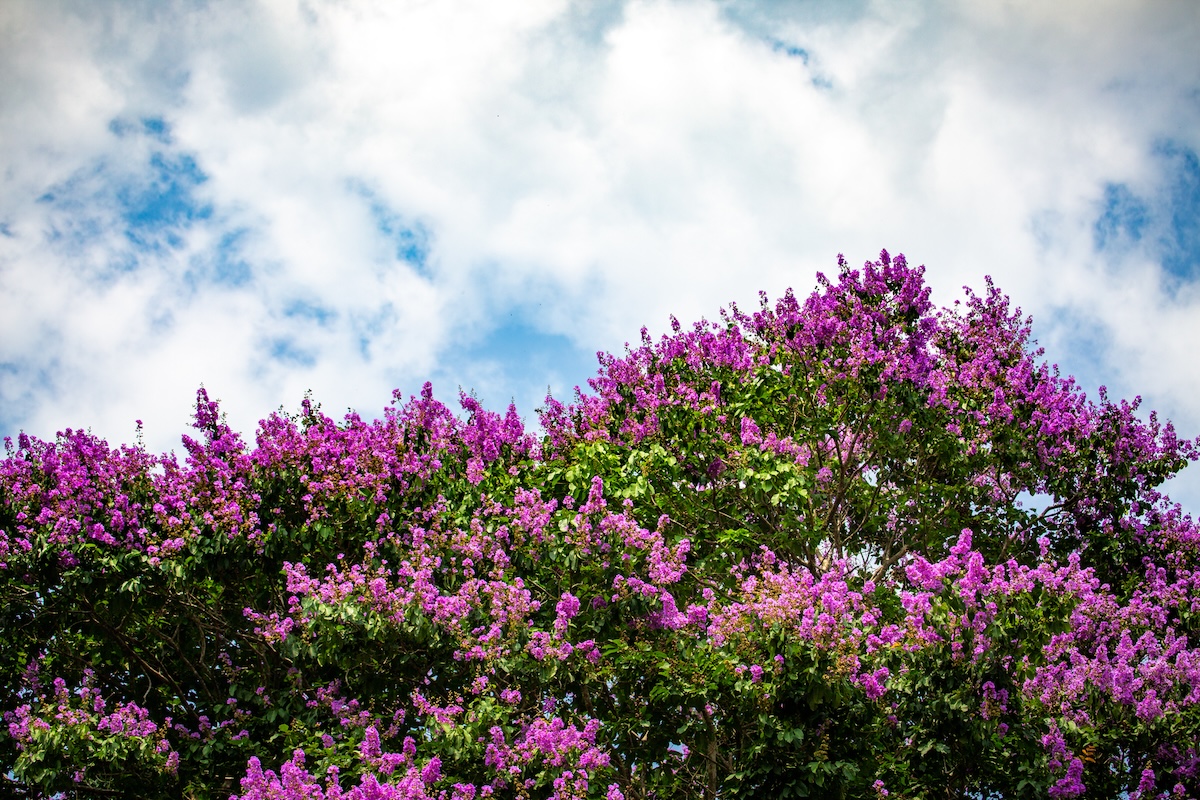

We may earn revenue from the products available on this page and participate in affiliate programs. Learn More ›
If your climate is growing dryer and hotter, or has always been desert-like, don’t resign yourself to a brown landscape. Instead, opt for drought-tolerant trees, such as the following baker’s dozen, which can cope with limited rainfall, not to mention baking in the sun.
As to why you require such trees, Sandy Feather, an educator on Penn State’s Extension’s Green Industry Team, says, “While drought impacts all plants, woody plants can experience those impacts for years to come in the form of susceptibility to disease and insect damage. Extended drought reduces photosynthesis, which in turn interferes with the production of secondary metabolites that are essential for plant defenses.” Planting trees that are designed for the environment in which they are planted helps ensure a healthier landscape.
1. Caddo Sugar Maple (Acer saccharum ‘Caddo’)
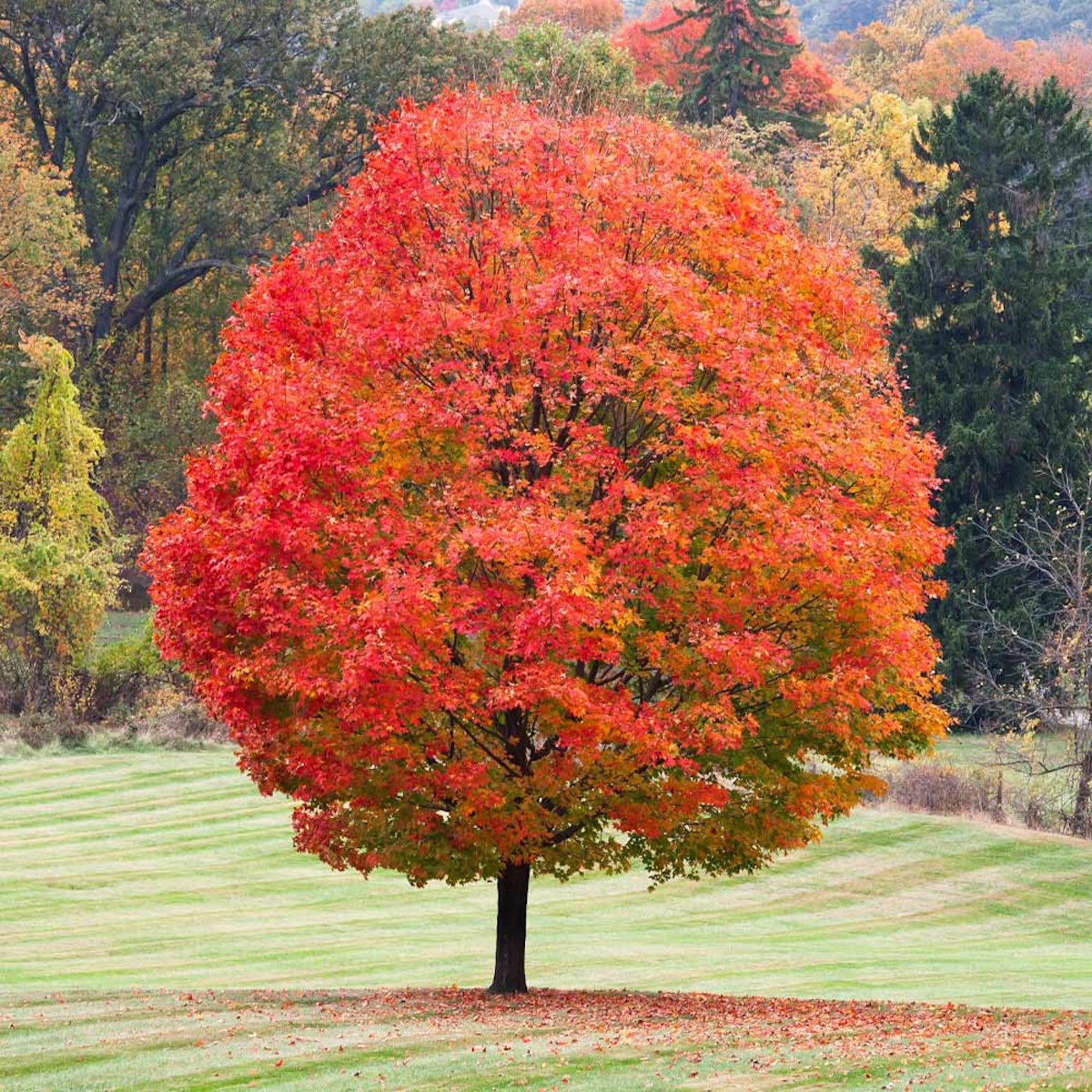
While there are many varieties of sugar maple trees that require plenty of irrigation, this Oklahoma native is an exception. It grows to 50 feet tall and produces leathery leaves that are more resistant to scorching. Keep in mind that, as the University of Massachusetts Extension emphasizes, “any plant, regardless of how drought tolerant it may be, will require supplemental watering during its period of establishment in the landscape.”
Best For: Lawn tree, shade tree, syrup tree
Hardiness Zones: 5-9
2. Chaste Tree (Vitex agnus castus)
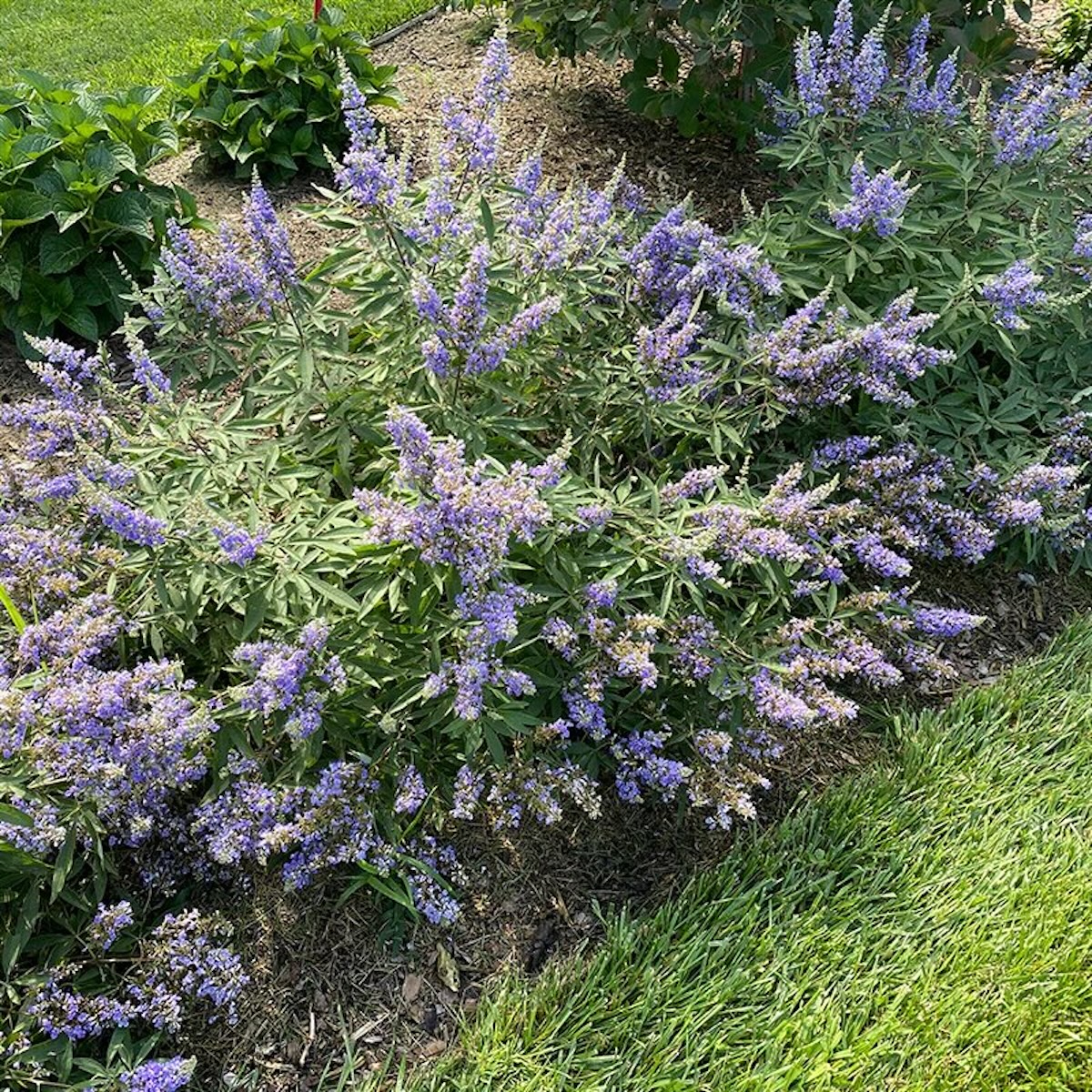
Chaste trees number among the drought resistant trees that grow fast, though they usually don’t surpass 25 feet and may die back to the ground during winter in Zone 6, making them drought tolerant tall plants there instead. With scented silvery palmate foliage and also fragrant pale purple, pink, or white panicles of summer flowers, they can—according to The New Sunset Western Garden Book—”take drought and heat, are pest-free, and attract butterflies and honeybees.”
Best For: Flowering tree, patio tree, pollinator garden
Hardiness Zones: 6-9
3. Crape Myrtle (Lagerstroemia indica)
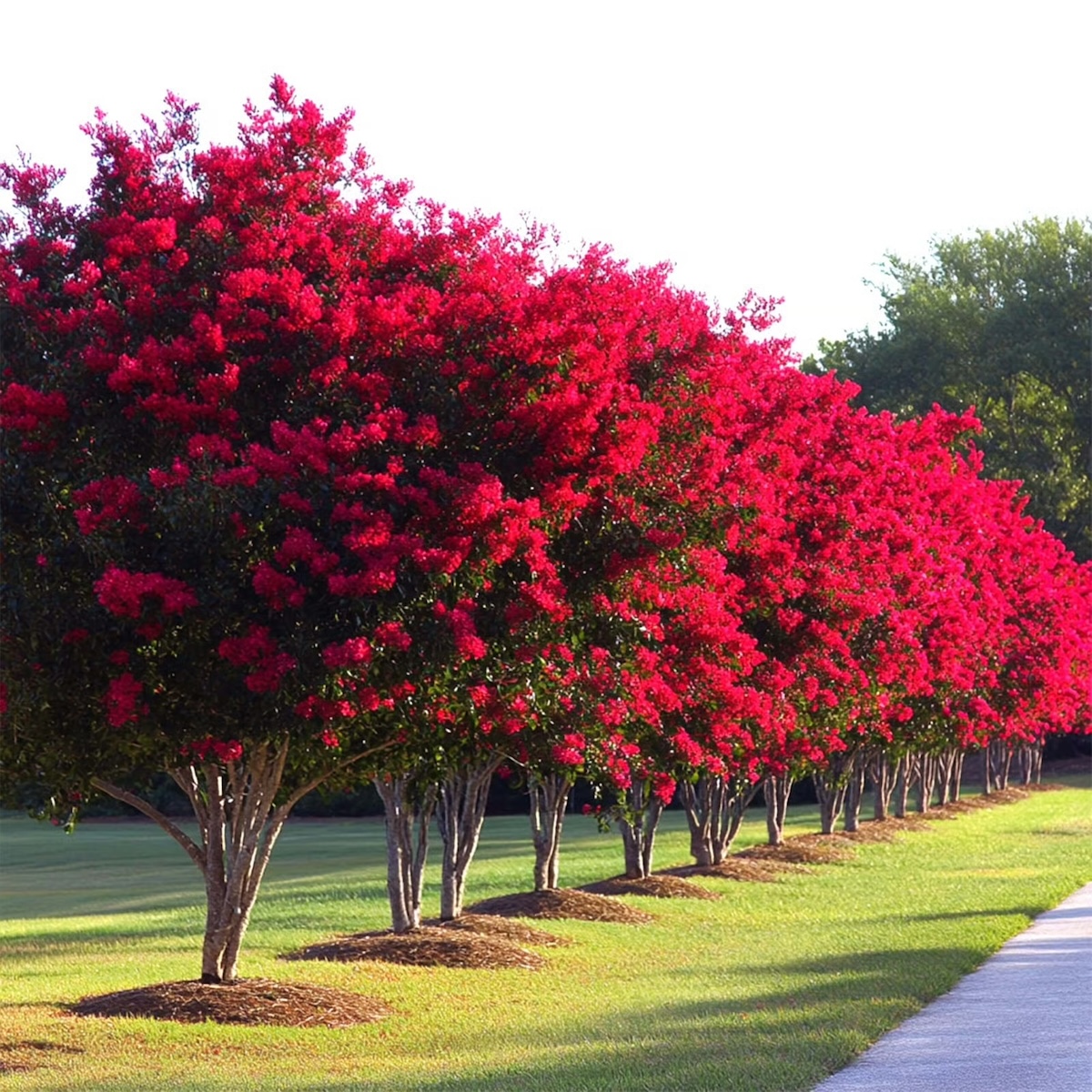
Blooming from midsummer to early autumn, crape myrtle produces glossy, sometimes red-tinged green foliage and 1 to 1 ½ inch crepe paper-like flowers in a variety of colors on 6 to 18-inch panicles. Usually growing no taller than 30 feet, the tree also is valued for its decoratively peeling bark, and its leaves may turn entirely red—or orange or yellow—in the fall. According to North Carolina Extension, this tree “resists deer, drought and pollution.”
Best For: Flowering tree, lawn tree, specimen tree
Hardiness Zones: 6-9
4. Cutleaf Lilac (Syringa x laciniata)
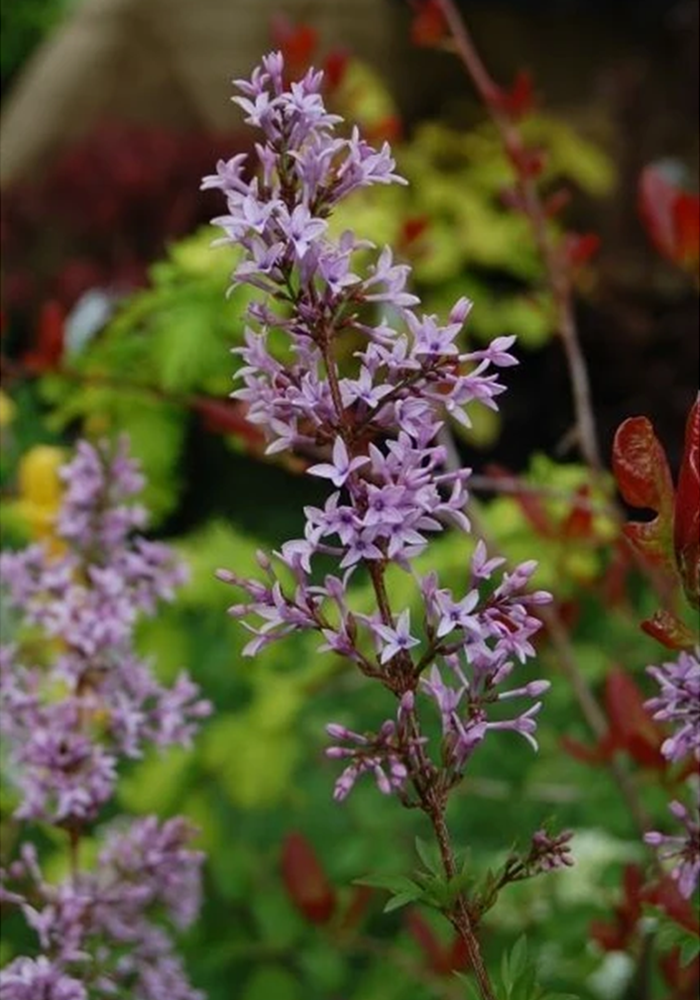
Described by UC Davis Arboretum as “more drought tolerant and disease resistant than other lilacs,” the cutleaf type also has more finely cut foliage than those other varieties and 3-inch panicles of sweetly scented pale purple blooms in late spring. It tolerates heat better than other lilac varieties do. Cutleaf lilac tops out at about 8 feet, and is sometimes classified among drought tolerant shrubs rather than trees.
Best For: Flowering shrub, patio tree, privacy tree
Hardiness Zones: 4-8
5. Desert Willow (Chilopsis linearis)
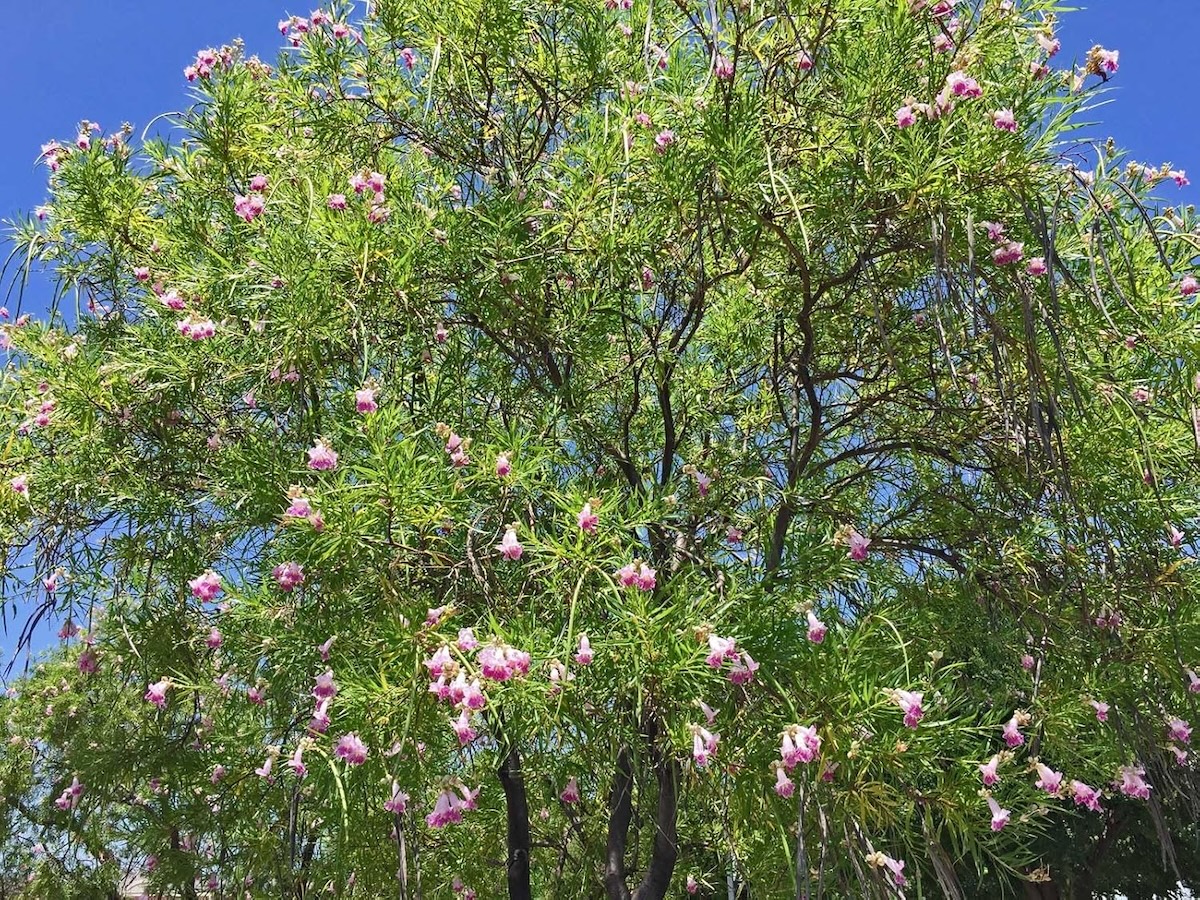
With narrow leaves and orchid-like flowers more reminiscent of rain forest blooms than desert ones, this “willow” manages to produce those posies on and off from late spring to early autumn on very little water. It grows to 30 feet, its fragrant, cattleya-like, bicolor or tricolor flowers varying in hue from white to pink to lavender. Depending on how it is pruned, it can be listed among small trees or low maintenance drought tolerant shrubs.
Best For: Flowering tree, patio tree, xeriscaping plant
Hardiness Zones: 7-9
6. Strawberry Tree (Arbutus unedo)
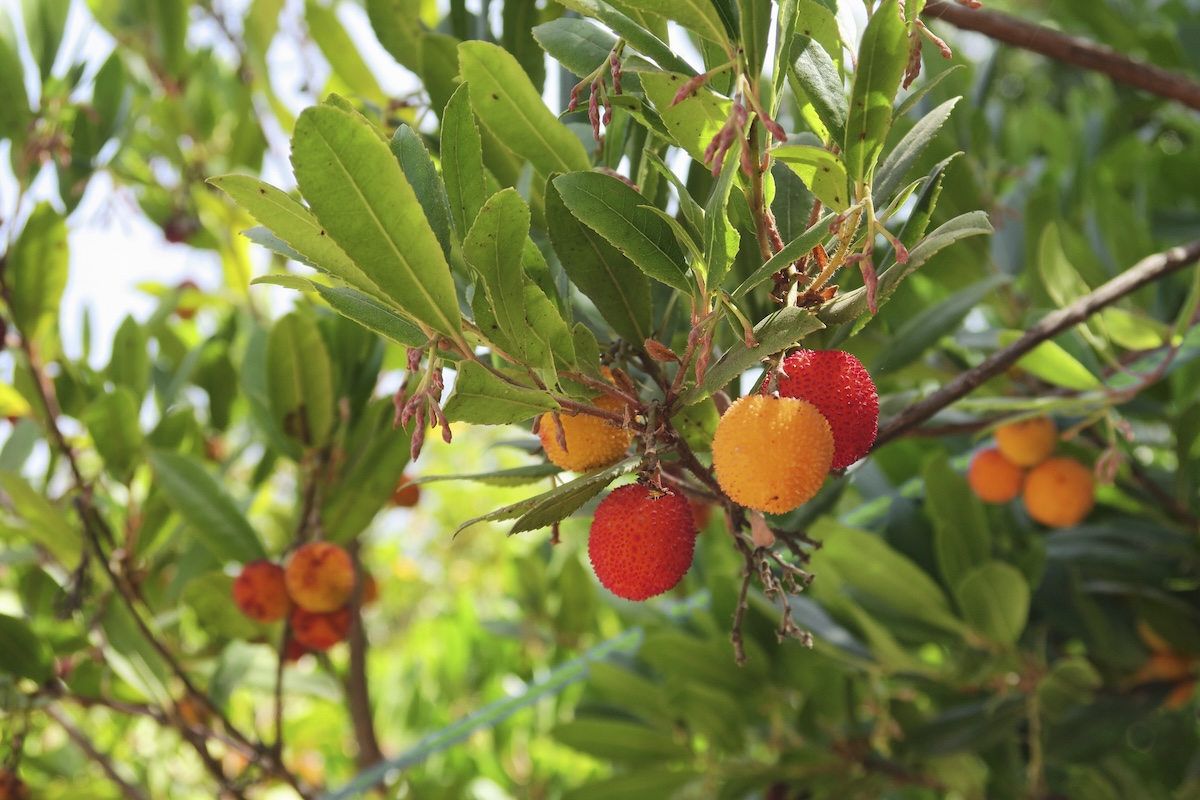
Although it doesn’t actually produce strawberries but rounder and rougher red fruits, this drought tolerant tree is highly appealing—partly due to its peeling bark. It especially shines in autumn when its panicles of pink or white flowers appear at the same time as the showy and edible but bland fruits from the previous year’s blooms. If you prefer a smaller tree than this ultimately 35-foot variety, choose a dwarf cultivar such as ‘Compacta.’
Best For: Flowering tree, patio tree, songbird tree
Hardiness Zones: 7-10
7. Eastern Red Cedar (Juniperus virginiana)
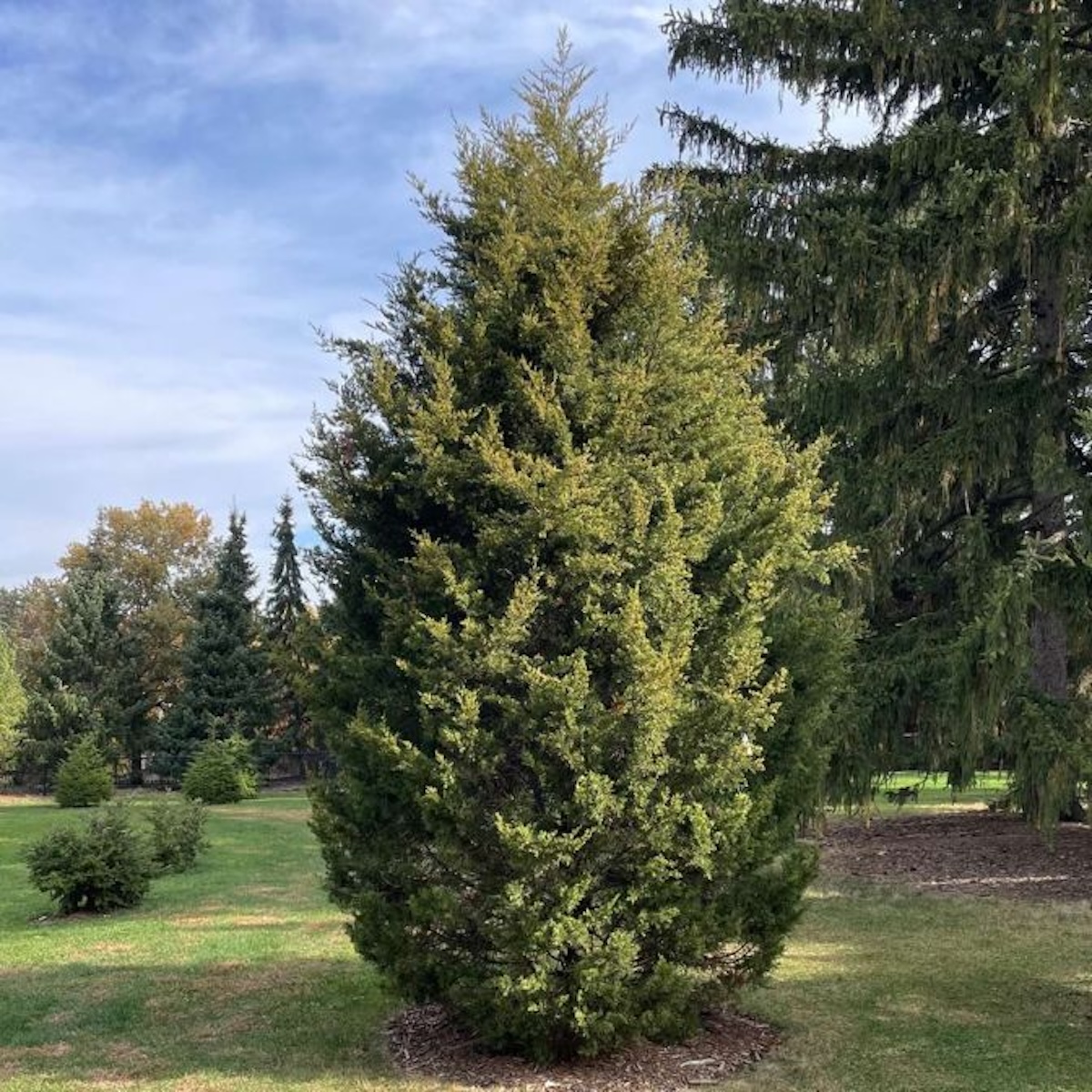
Among drought resistant evergreen trees, this one—according to North Carolina Extension—”has the best drought resistance of any conifer native to the eastern United States.” Growing to 40 feet with blue-green foliage and cones and the scent of the cedar chests constructed from its insect and rot-repelling heartwood, this native juniper also produces berries for the birds. Best of all, such drought tolerant privacy trees can remain evergreen without a never-ending supply of water.
Best For: Native garden, privacy tree, winter garden
Hardiness Zones: 2-9
8. Ginkgo (Ginkgo biloba)
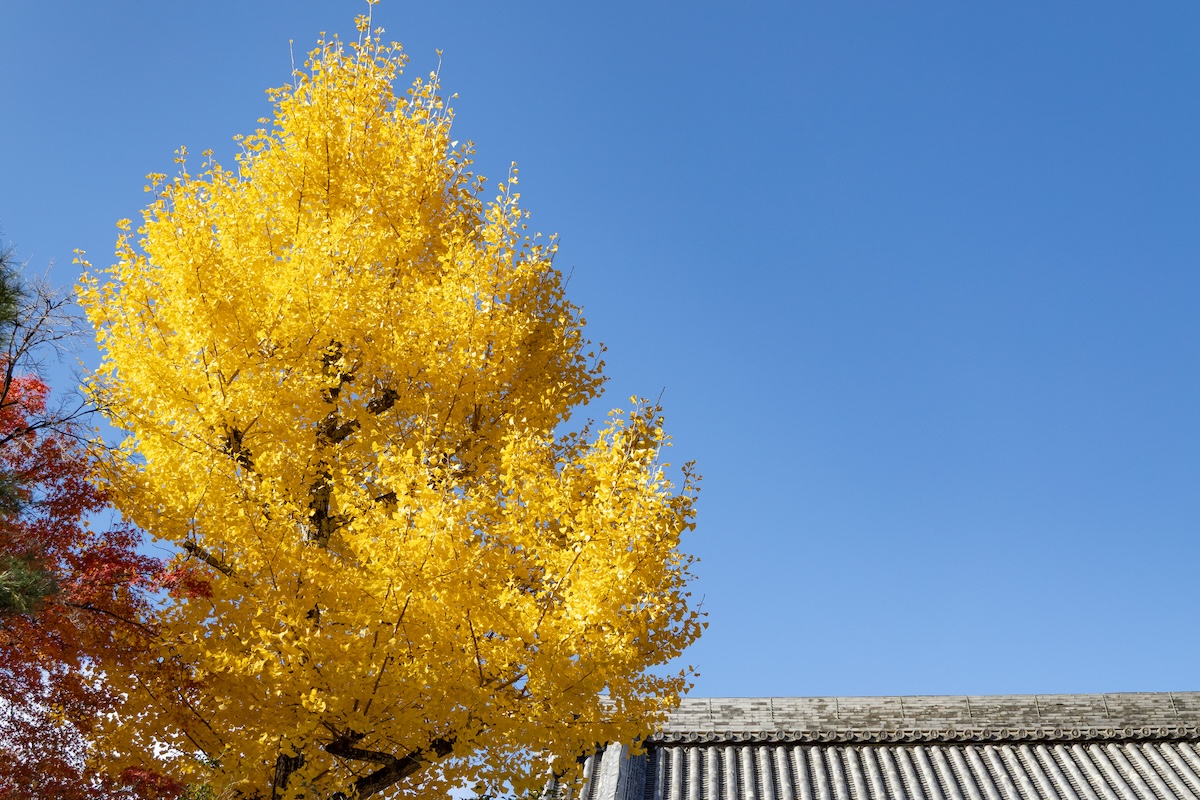
Most people wouldn’t expect to find a specimen as ferny looking as gingko among the drought resistant trees. Also known as the maidenhair tree for its foliage’s resemblance to the maidenhair fern, this “dinosaur” has lasted for thousands of years by being a survivor. It grows to 100 feet with fan-shaped leaves which turn gold and drop in autumn. You’ll want to plant male trees because the females drop stinky and mildly toxic fruits.
Best For: Children’s garden, shade tree, street tree
Hardiness Zones: 3-9
9. Incense Cedar (Calocedrus decurrens)
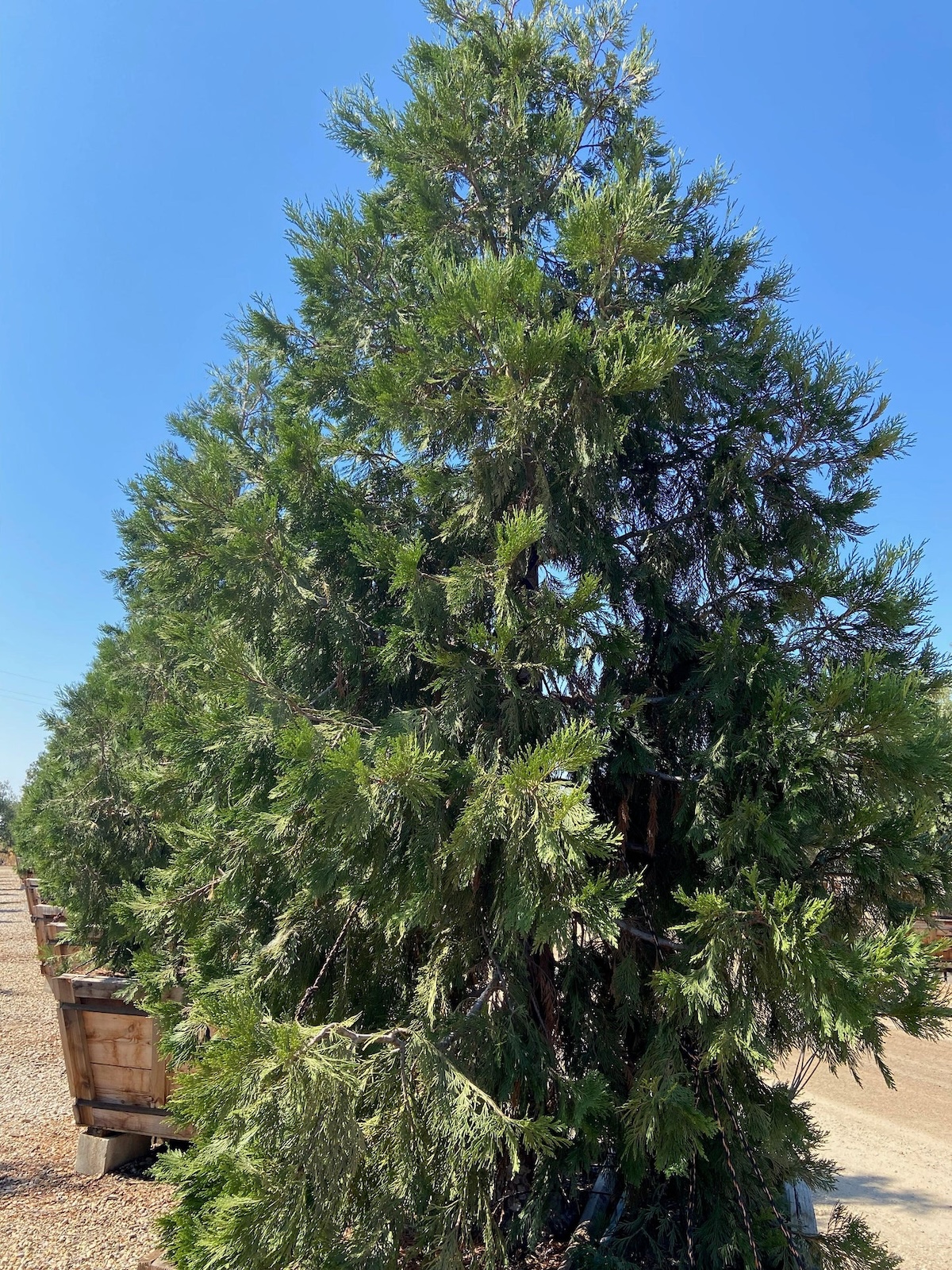
Although of a different genus than the eastern red cedar, incense cedar also offers a pleasant odor and what The New Sunset Western Garden Book calls foliage “held in flat sprays, as though it had been ironed.” Among the heat resistant trees as well as those for drought tolerant landscaping, it can grow up to 70 feet with reddish brown cones and peeling bark. Select its location carefully as it is difficult to transplant once established.
Best For: Hedge tree, privacy tree, specimen tree
Hardiness Zones: 5-8
10. Oregon White Oak (Quercus garryana)
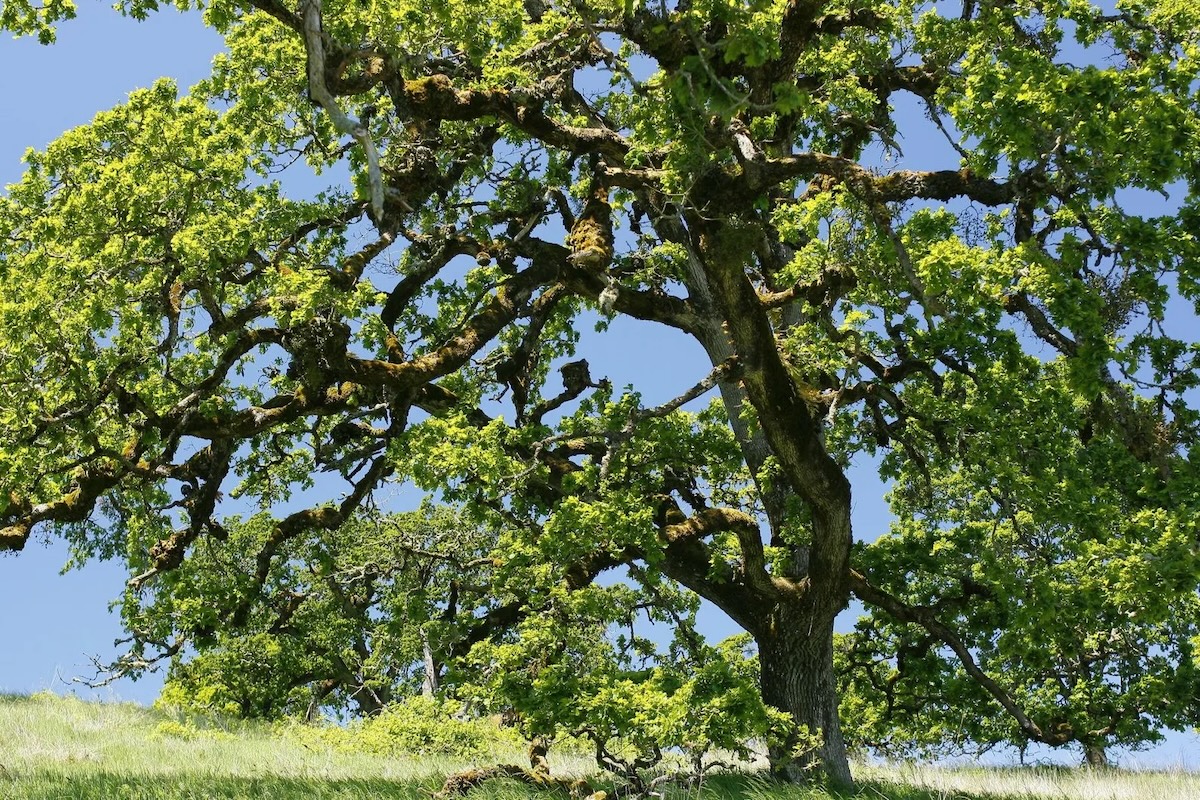
Although almost all oaks qualify as trees that are drought tolerant, the garry type actually prefers dry soil during summer. It is described by Oregon State University as “not suitable in an irrigated lawn” where it may develop root rot. Native to the western coastal states, it can grow to 90 feet with leathery green leaves that turn reddish brown in autumn and acorns that are edible if leached first.
Best For: Shade tree, specimen tree, wildlife garden
Hardiness Zones: 6-9
11. Pinyon Pine (Pinus edulis)
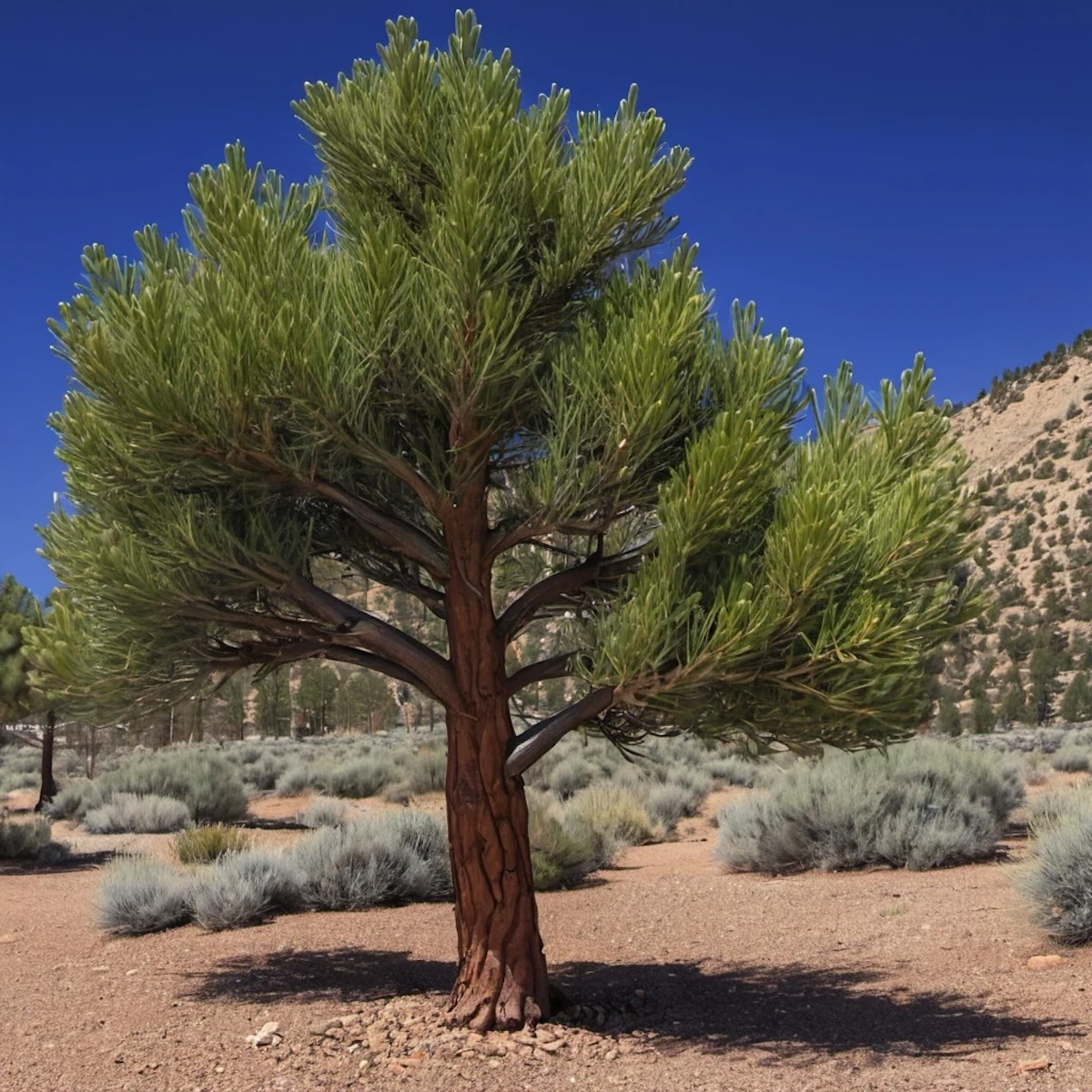
One of the drought tolerant small trees, this slow growing pine typically only reaches about 20 feet. But its dense growth and attractive 2-inch light brown cones among dark green needles make it ideal for containers, small gardens, and xeriscape landscaping. As an additional bonus, the pine nuts produced in those cones are edible. The tree reportedly can survive on infrequent watering as long as that watering is deep.
Best For: Bonsai, containers, rock gardens
Hardiness Zones: 6-8
12. Smoke Tree (Cotinus coggygria)
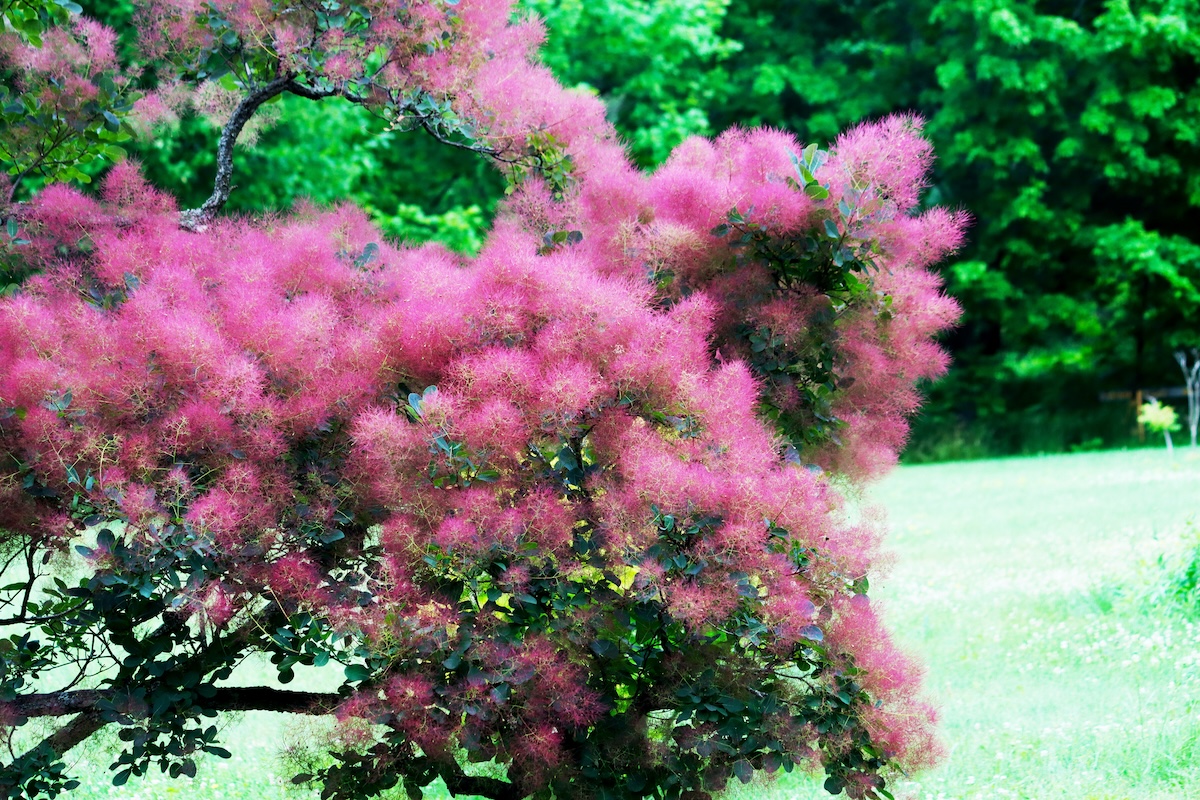
Growing to 15 feet tall, this deciduous small tree produces clouds of pink “flowers” in midsummer. (Those blooms actually are plumes of pink-haired flower stalks which are easier to see than the true inconspicuous yellow flowers.) The foliage color varies from the original blue green to the purple of cultivars such as ‘Royal Purple’ and often changes to hotter hues in autumn. As its smokin’ appearance implies, this tree tolerates both heat and drought.
Best For: Flowering tree, privacy screen, specimen tree
Hardiness Zones: 4-8
13. Western Redbud (Cercis occidentalis)

Among moderate to fast growing drought tolerant trees is the western redbud, which produces magenta blooms similar to those of sweet peas. Those are followed by magenta seed pods and blue-green heart-shaped leaves that turn yellow or red in autumn. The New Sunset Western Garden Book describes the trees as “excellent on seldom watered banks.”
Best For: Bank garden, flowering tree, patio tree
Hardiness Zones: 6-9
